Back Pain & Sciatica in Cincinnati
Do you wake up in the morning with that nagging back pain? Are you feeling achy pain in your back, buttock, or even thigh? Are you having to watch what you do, because you are afraid you may hurt your back? If so, physical therapy can help.
Back pain and sciatica differ but are often confused with each other. Back is specific to the upper, mid or low back. Sciatica is a more diffuse, radiating pain down the buttock, thigh, and even leg. It is also possible to have radiculopathy, which is a radiating numbness, tingling, burning, or sharp pain to a specific part of the leg. This is often associated with a herniated disc, or entrapment of the nerve of that area, as it exits the spine.
If you are searching for back pain relief or sciatica relief, don’t rely on medicines to mask the symptoms. Your body is telling you of the deeper root cause of the problem, that needs to be fixed. Know that physical therapy should be your first treatment of choice, which eliminates your need for harmful painkilling drugs, such as opioids, or possibly avoid an invasive surgical procedure.

How will physical therapy in Cincinnati help with my back pain or sciatica?
For most people, back pain will come and go. However, what many people don’t realize, is that the underlying problem of poor joint movement, core weakness, and poor muscle coordination, will set them up for a future back injury, which can be significantly worse.
Back pain and sciatica are both completely treatable through physical therapy. Your physical therapist creates a specific treatment plan for you that is dependent upon your diagnosis. The early stages of your physical therapy treatment focus on quick pain relief.
As your pain reduces, your physical therapist will expand on strengthening your core muscle group with specific therapeutic exercises and stretches. The goal here is to increase your strength and range of motion to prevent re-injury of your spine. Finally, we teach you ergonomics and ways to make sure you know how to take care of your spine, avoiding future problems.
If you are suffering from sciatica, our physical therapists will implement specific leg stretches into your treatment plan to loosen the sciatic nerve. This restores the natural health of the nerve and quickly reduces symptoms.
How can I tell if it’s back pain or sciatica?
Sciatica
Sciatica is a specific type of back pain that is reported as being highly uncomfortable. However, it is also fortunately very simple to diagnose. People with sciatica experience pain along their sciatic nerve, which is the largest nerve in your body.
The sciatic nerve begins at your lower back and then splits at the base of your spine to extend further down to your buttocks, legs, and finally to the bottom of each foot. The sciatic nerve can become compressed or irritated, which causes a “shooting,” “stinging,” or “burning” sensation in your lower back, buttocks, legs, or feet
Back pain
“Back pain” is a term that can be caused by an array of different conditions. For example, you may experience back pain due to poor posture, a motor vehicle accident, or a lifting injury. The treatment plan that your physical therapist sets up for you, will depend on how you developed the back pain, in addition to its exact location and your past medical history.
Back pain can be described as acute, meaning it is short-term, or chronic, meaning it is long-term (typically lasting for three months or longer).
What Causes Back Pain or Sciatica in Cincinnati?
General back pain typically develops as the result of an injury. This can be due to repetitive straining motions, such as leaning down multiple times throughout the day to pick up a toddler, or a more serious, sudden trauma, such as a motor vehicle accident. Underlying conditions, such as herniated discs, can also cause immense pain, and cause radiculopathy pain to the thigh, leg, or foot. Degenerative disc disease is a common condition as we age, which can result in back pain. Those with this condition typically report dull, aching pains in their lower back, and have difficulty with prolonged standing or walking.
Sciatica’s technical name is “lumbar radiculopathy.” People who develop this condition are generally between the ages of 30 and 50. Many different types of injuries can cause the development of sciatica, including arthritis, bone spurs, or any other injury that impacts the sciatic nerve. Most commonly, we find that people lose their flexibility in the hips and pelvis, which causes the gluteus and hip muscles to become tightened. This in turn, alters the mechanics of the spine, and compression to the sciatic nerve as it travels through these tissues.
FAQs
How do I know if my back pain or sciatica is serious enough to see a physical therapist?
You should get evaluated if your back pain or leg symptoms last more than a few days, keep coming back, or make it hard to sit, stand, sleep, or do normal activities. Pain that travels into the buttock, thigh, or leg; numbness or tingling; or needing to “baby” your back all the time are also signs you should not just wait it out. At WAVE Physical Therapy & Pilates in Cincinnati, our therapists can help you figure out what is causing your pain and whether physical therapy, imaging, or a referral to another provider is most appropriate.
What’s the difference between regular back pain and sciatica?
“Back pain” is a general term that can come from joints, discs, muscles, or ligaments in the spine. It may stay in the middle or one side of your back. Sciatica happens when the sciatic nerve (or one of its roots) is irritated or compressed, usually in the lower back or pelvis. This often causes pain, numbness, tingling, burning, or shooting sensations that travel into the buttock, thigh, calf, or foot. At your evaluation, your WAVE therapist will test your movement, strength, and nerve function to see whether your symptoms are coming from the back, the sciatic nerve, or both.
Can physical therapy help me avoid injections or surgery for back pain or sciatica?
In many cases, yes. For a large percentage of people, back pain and sciatica improve with a targeted physical therapy plan that restores joint mobility, reduces nerve irritation, and strengthens the core and hip muscles that support the spine. At WAVE, we focus on finding the root cause of your symptoms—such as stiffness, weakness, posture, or movement habits—so you are not just relying on pain medication or injections. If we feel your symptoms need urgent medical or surgical attention, we will communicate that clearly and help guide you to the right provider.
How long does it take to feel better with physical therapy for back pain or sciatica?
Timelines vary depending on how long you have had symptoms, how severe they are, and whether there is nerve involvement. Some people notice changes in pain and movement within the first few visits. Others with long-standing or more complex problems may need several weeks of consistent therapy. A common starting point is 1–2 visits per week for 4–8 weeks, with specific home exercises between sessions. At your first appointment, your WAVE therapist will give you a realistic plan and explain what kind of progress to expect along the way.
Is it safe to stay active or exercise if I have back pain or sciatica?
In most cases, controlled movement is better than complete rest. Long periods of bed rest can actually make back pain and sciatica worse by weakening muscles and stiffening joints. At WAVE Physical Therapy & Pilates, we help you understand which movements are helpful, which ones to temporarily avoid, and how to modify walking, lifting, and exercise so you stay as active as possible while your back and nerves calm down. Your program may include gentle mobility work, core and hip strengthening, posture training, and gradual return to the activities you enjoy.
Back Pain Relief in Cincinnati
Our physical therapist can help to manage low back pain and sciatica symptoms through the use of targeted physical therapy treatment. This safe and prescription drug-free treatment option is non-invasive and designed to promote faster natural healing while providing fast pain relief. Instead of simply treating your symptoms, physical therapy is designed to alleviate pressure on the sciatic nerve for long-lasting relief. Want to learn more about the benefits of physical therapy for lower back pain and sciatica? Contact our physical therapist today for more information and be sure to schedule an initial consultation.



